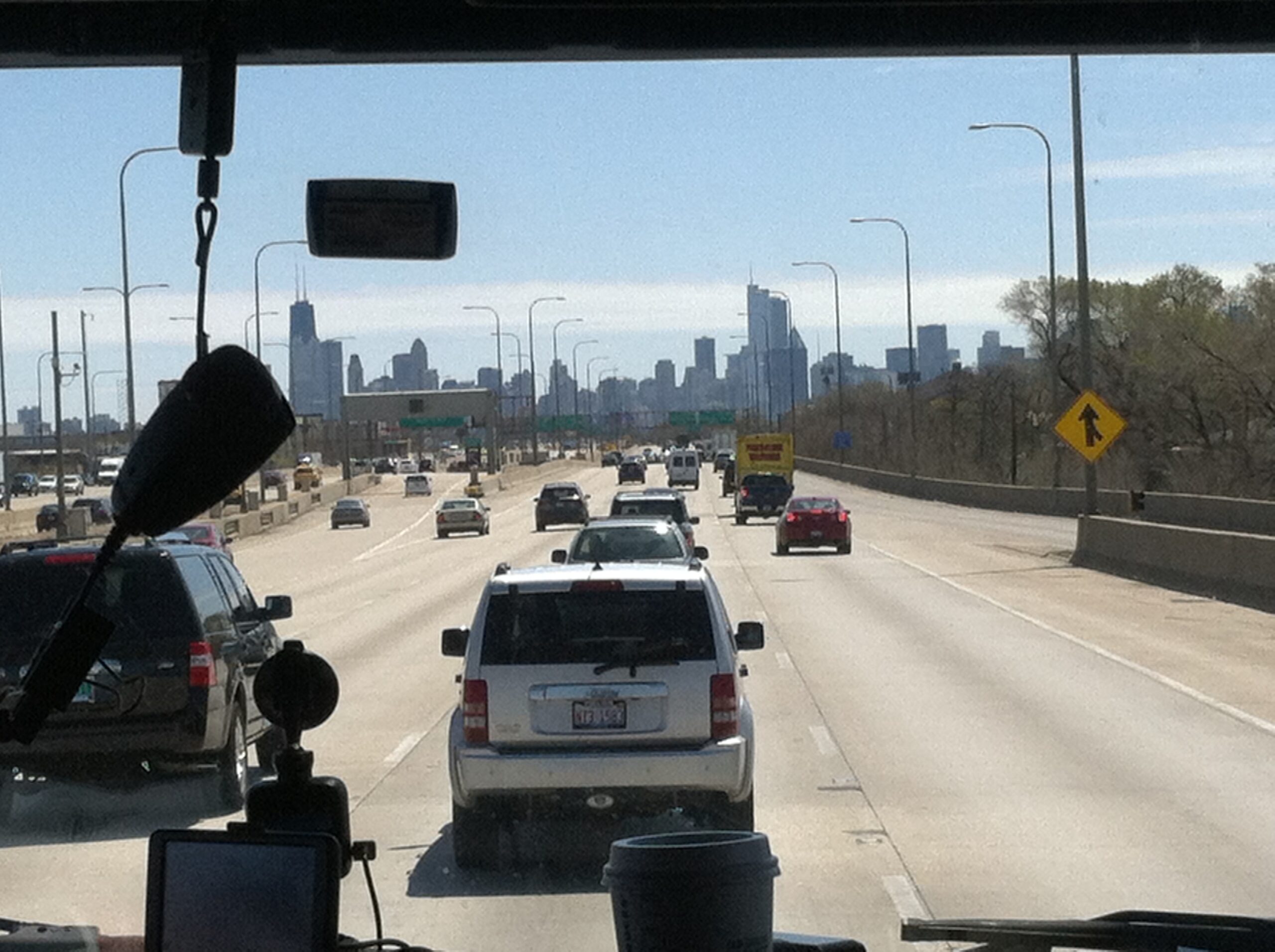
What is a courier trip?
When a Museum’s registrar is away from their desk, it doesn’t mean they’re on vacation. Art objects being loaned from one museum to another for an exhibition sometimes require a courier trip. These trips occur when pieces of art must be accompanied by museum staff, (typically a registrar, conservator, or curator) in order to ensure seamless transport, special handling or installation techniques. Objects of historic or artistic value may also require a chaperone when it leaves art storage.
Riding on a fine art truck is just one type of courier trip. On some trips a courier will hand-carry the object in a locked carrying case, or supervise crates on the tarmac before and after a flight. On other occasions a courier will simply meet the object at its destination and not travel with it at all. It all depends on the nature of the piece and the institution’s practices and policies.
What happens on a courier trip?
Lauren Thompson, our Assistant Registrar, Loans & Exhibitions, recently braved the journey to Evanston, Illinois and back again, in order to accompany art in the exhibition Collecting Paradise: Buddhist Art of Kashmir and Its Legacies, after it closed at the Mary and Leigh Block Museum of Art at Northwestern University.
Here are some highlights from her journey:
Several pieces of art in the Collecting Paradise exhibition require courier accompaniment because of their age, value, and lender guidelines. Once the exhibition closed at the Block Museum I flew from NYC to Chicago to de-install, condition report, and pack pieces belonging to both the Rubin Museum and another NYC institution that I was representing; sometimes museums share couriers to cut down on cost and travel time. When all of the art and exhibition materials were packed into crates for travel, I was ready to supervise the loading of the exhibition onto the truck.
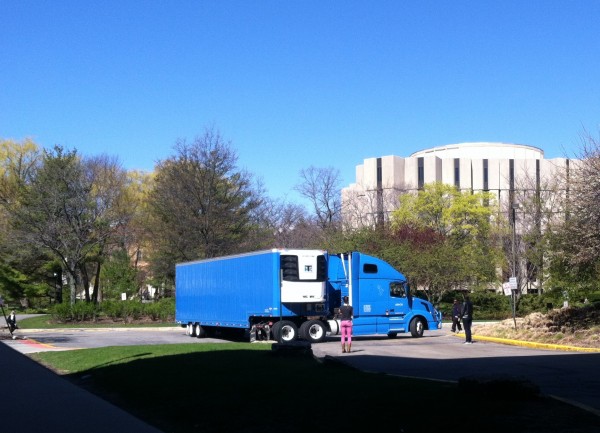
The truck was loaded crate by crate and I used checklists to make sure everything was accounted for and made it onto the shipment. Each crate was secured with two straps to make sure they wouldn’t shift during travel.
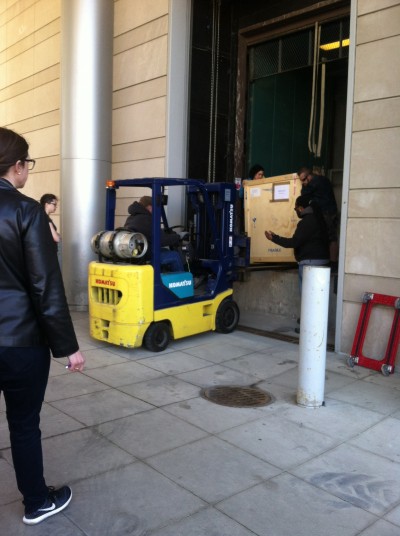

Once the crates were loaded and the cargo doors locked, the road trip began. With the two drivers switching shifts to drive, we were able to travel through the night. We left at 11:30 am from the Block Museum and arrived at the Rubin Museum at 4:30 am the next day; that’s 17 hours on a truck!

Thankfully, in the cabin behind the driver and passenger seats there were bunk beds. There was a large seat belt, almost like a net, to fasten over yourself so you don’t fly off the bed while you are sleeping. Since I had a lot of time to kill, I chatted with the drivers, read, and watched a few movies. We drove through very scenic states (I had never been to Indiana or Ohio before), and I saw a lot of cows.
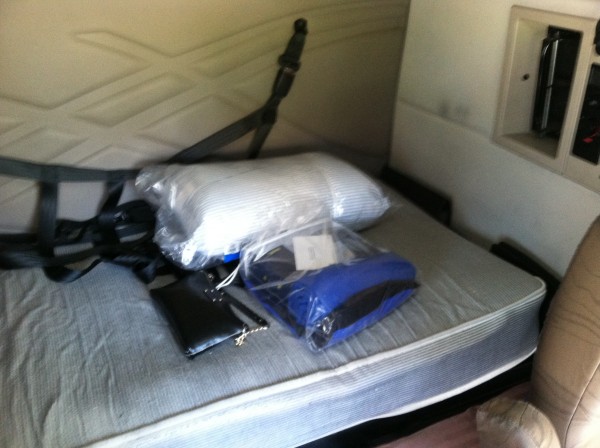
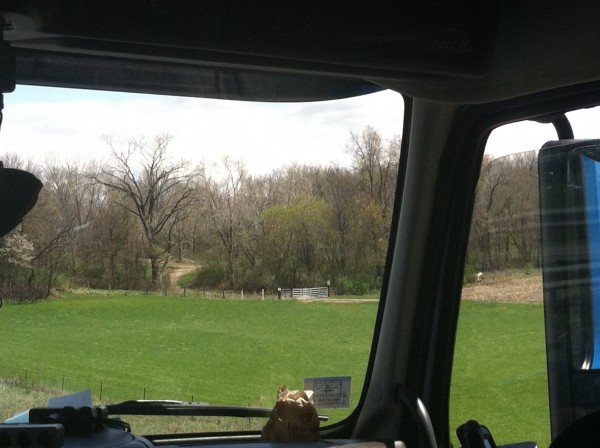
We reached the Rubin Museum early in the morning and waited for the art handlers to arrive to begin unloading the truck. Everything traveled and arrived safely—myself included. The unloading was a success until one crate was a little too big to fit through our entrance. We had to take the door off the hinge to get the crate into the building—I guess not everything could go smoothly!
Once the all the crates were brought into the museum’s storage, I headed home to enjoy the luxury of sleeping in my own bed. The crates acclimatized for 24 hours before we began the next phase of unpacking and installing the exhibition. This resting period allows the temperature and relative humidity inside the crate to gradually adjust to the controlled environment of the new venue, limiting any drastic environmental changes that could harm the works of art.
Courier trips can be adventurous journeys to new places with a great sightseeing agenda, but for me, my trip was just a retreat away from my desk.

